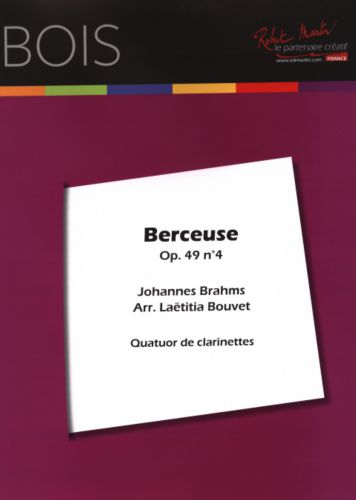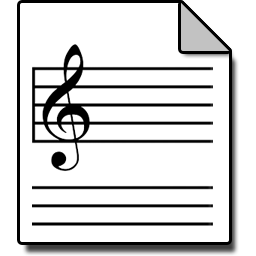On order, usually dispatched within 5 days
BERCEUSE OP.49 N 4
 (BRAH05858) :
€ 19,23
(BRAH05858) :
€ 19,23


 Johannes BRAHMS
Johannes BRAHMS
Arr : LAETITIA BOUVET
Publisher : Editions Robert Martin
Duration : 2'30
Genre : Instrumental music
Group : Clarinet
Style & options : Clarinet ensemble
Genre : Instrumental music
Group : Clarinet
Style & options : Clarinet ensemble



Add € 35,00 of eligible items (1) to your order to qualify for FREE Shipping (2) in FRANCE
(1)Instrumental music (2)Free shipping cost : € 0,01

Combien d'entre nous a été bercé par cette douce mélodie ? « good eveninggood evening, good nightgood night » est une ?uvre publiée en 1868, initially for voice and piano.
Like Schubert and Schumann, Brahms is a great composer of lieder. He composes nearly 200, in very diverse styles : popular songs to lieder on the texts of the greatest poets, from his propensity for nostalgia to his meditations on death.
Wiegenlied est extrait d'un ensemble de cinq lieder. Cette berceuse est sans doute la mélodie la plus connue de l'?uvre de Brahms. C'est une amie de Brahms, Bertha Faber, who interprets it for the first time for his son's birthday.
The first stanza is a text extracted from a collection published between 1805 et 1808 : Knaben Wunderhorn ("The wonderful horn of the child"), it brings together nearly a thousand German folk songs, some of which date back to the Middle Ages. The second was written in 1849 by Georg Sherer.
good eveninggood evening, good nightgood night,
watched over by roses
covered with cloves,
slip under the comforter!
Tomorrow morning, if God wants,
You will wake up again.
good eveninggood evening, good nightgood night,
guarded by cherubs,
who show you in a dream
the tree of little jesus :
sleep now, blessed and gently
look into the dreams of Paradise.
The lullaby of Brahms is of great apparent simplicityhere : his melody, identical for each stanza, is made up of two sentences, themselves made up of two parts. But the accompaniment of the piano is subtle and delicate, and the syncopated chords of the right hand bring the rocking favorable to rocking. Another aspect inseparable from the lullaby, repetition : here, each stanza is repeated twice and, inside each of them, #-##en#99##-#
Google machine translation: Original story of the work
Like Schubert and Schumann, Brahms is a great composer of lieder. He composes nearly 200, in very diverse styles : popular songs to lieder on the texts of the greatest poets, from his propensity for nostalgia to his meditations on death.
Wiegenlied est extrait d'un ensemble de cinq lieder. Cette berceuse est sans doute la mélodie la plus connue de l'?uvre de Brahms. C'est une amie de Brahms, Bertha Faber, who interprets it for the first time for his son's birthday.
The first stanza is a text extracted from a collection published between 1805 et 1808 : Knaben Wunderhorn ("The wonderful horn of the child"), it brings together nearly a thousand German folk songs, some of which date back to the Middle Ages. The second was written in 1849 by Georg Sherer.
good eveninggood evening, good nightgood night,
watched over by roses
covered with cloves,
slip under the comforter!
Tomorrow morning, if God wants,
You will wake up again.
good eveninggood evening, good nightgood night,
guarded by cherubs,
who show you in a dream
the tree of little jesus :
sleep now, blessed and gently
look into the dreams of Paradise.
The lullaby of Brahms is of great apparent simplicityhere : his melody, identical for each stanza, is made up of two sentences, themselves made up of two parts. But the accompaniment of the piano is subtle and delicate, and the syncopated chords of the right hand bring the rocking favorable to rocking. Another aspect inseparable from the lullaby, repetition : here, each stanza is repeated twice and, inside each of them, #-##en#99##-#
Google machine translation: Original story of the work



